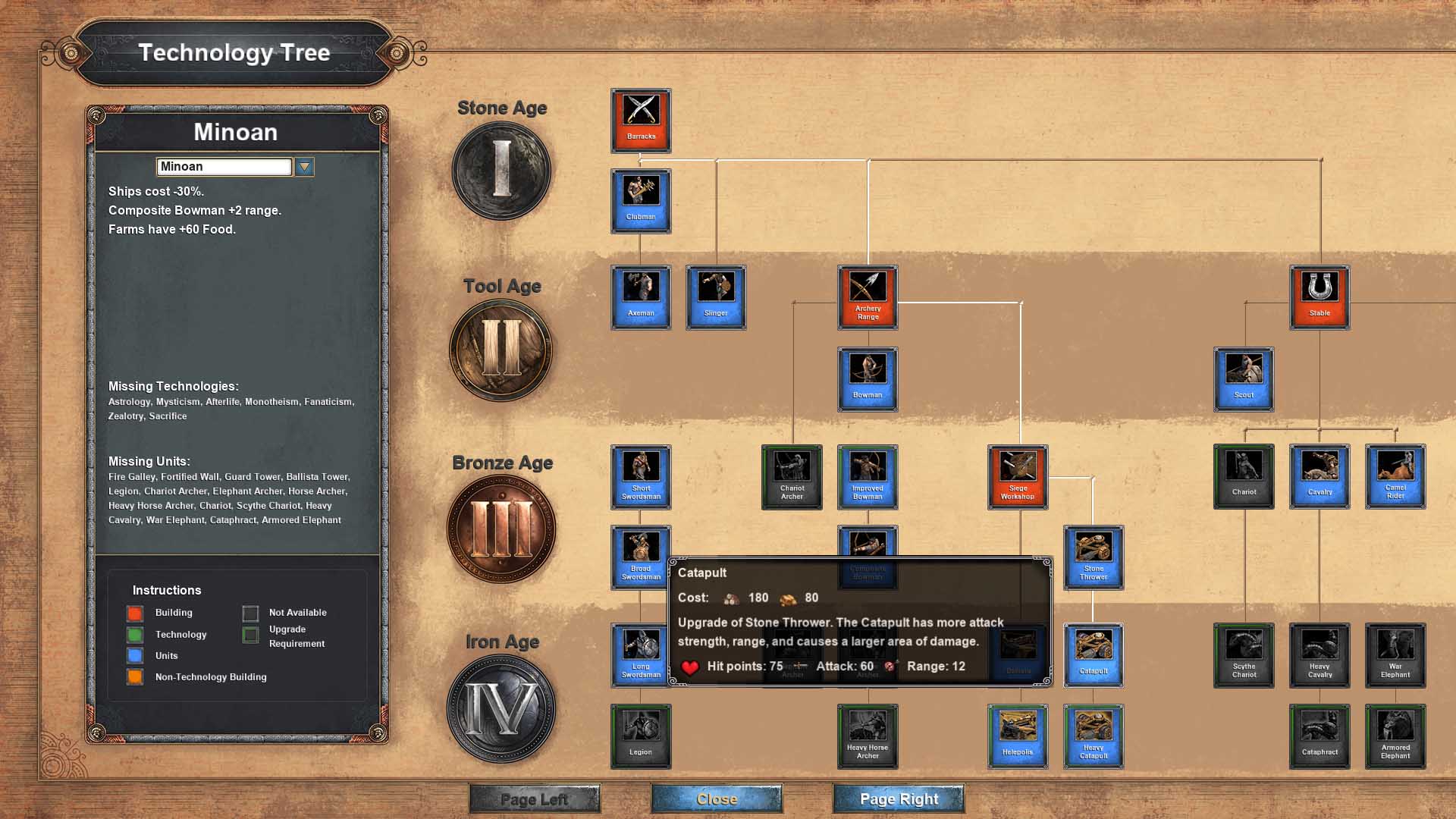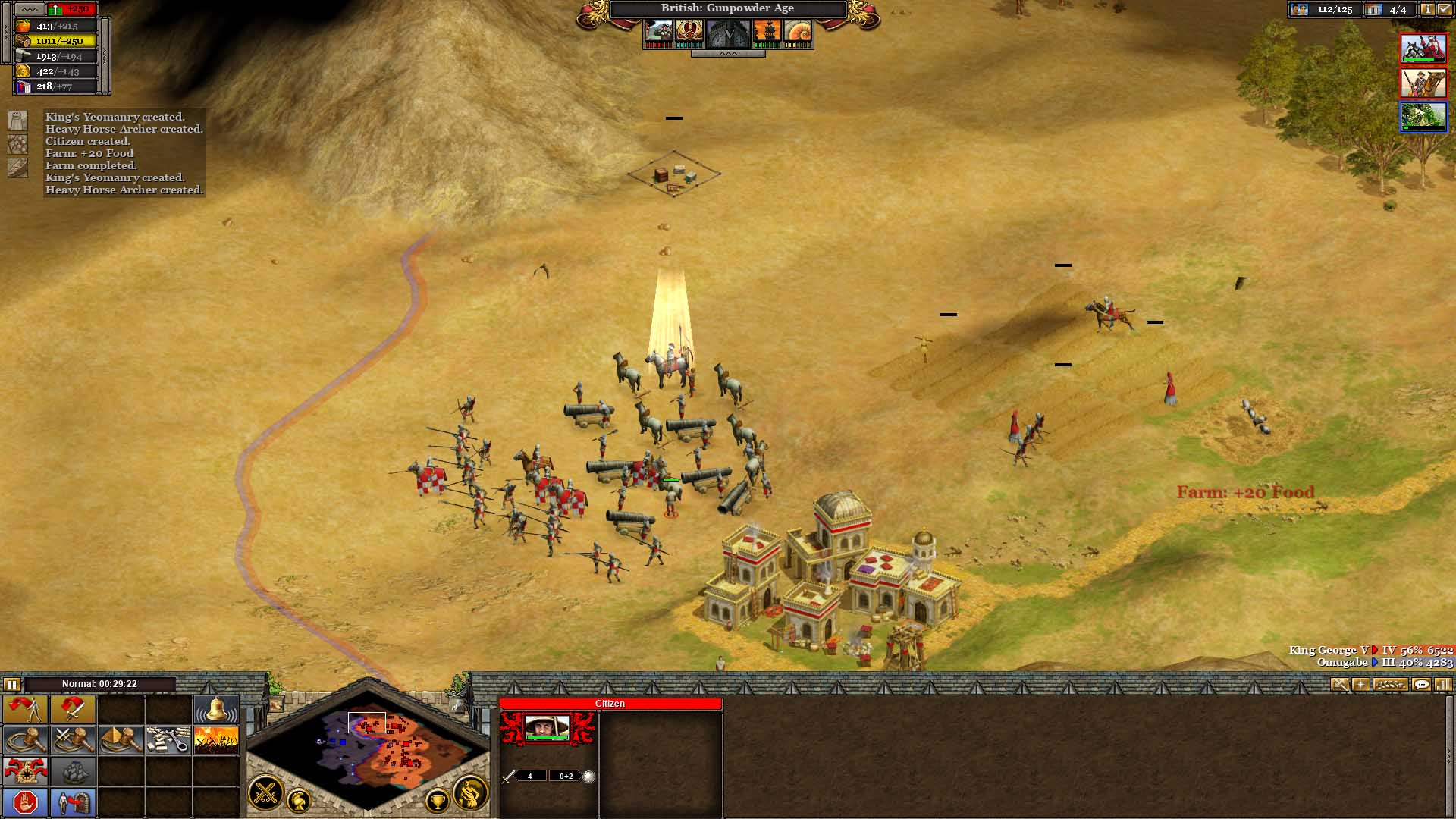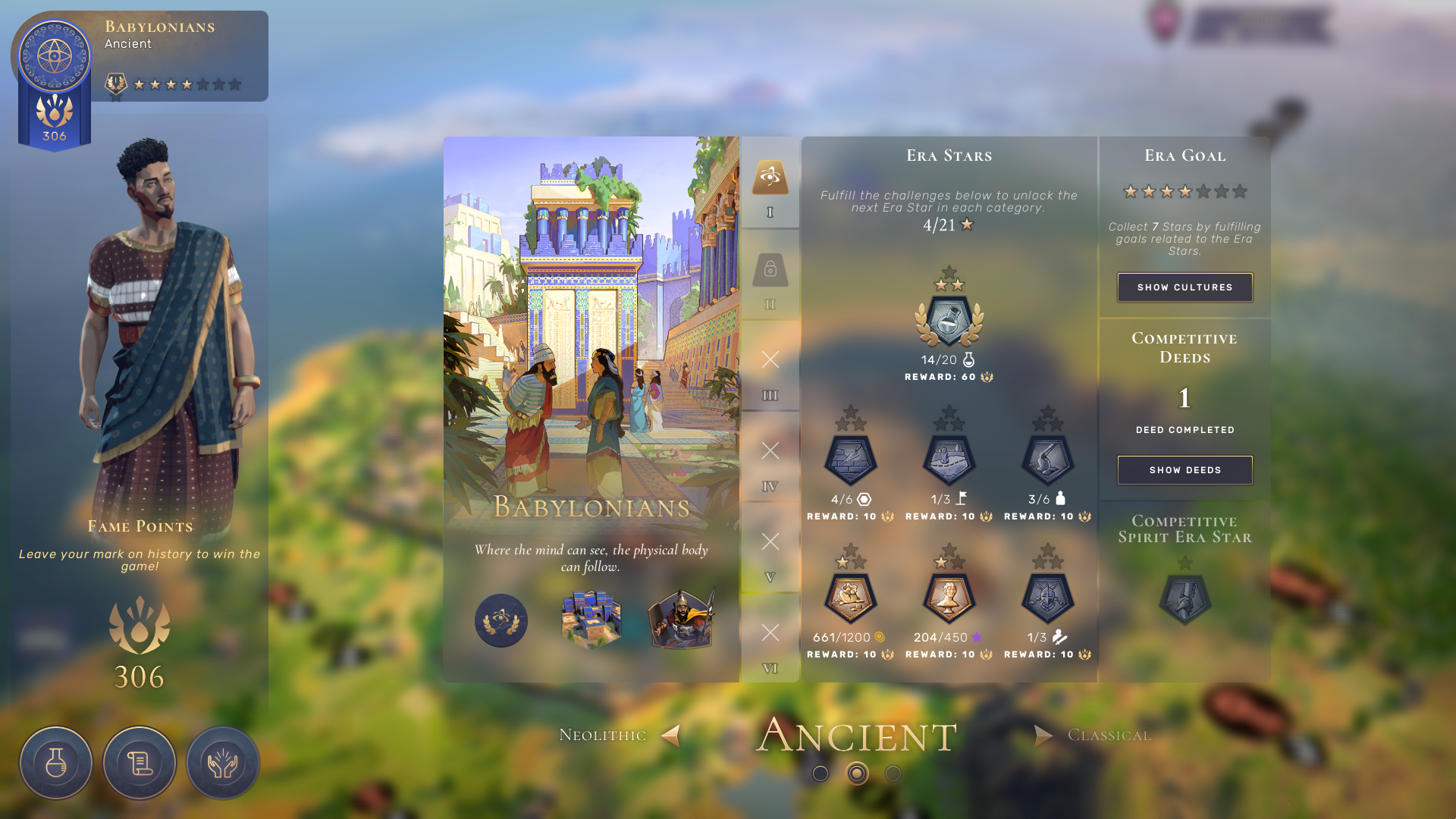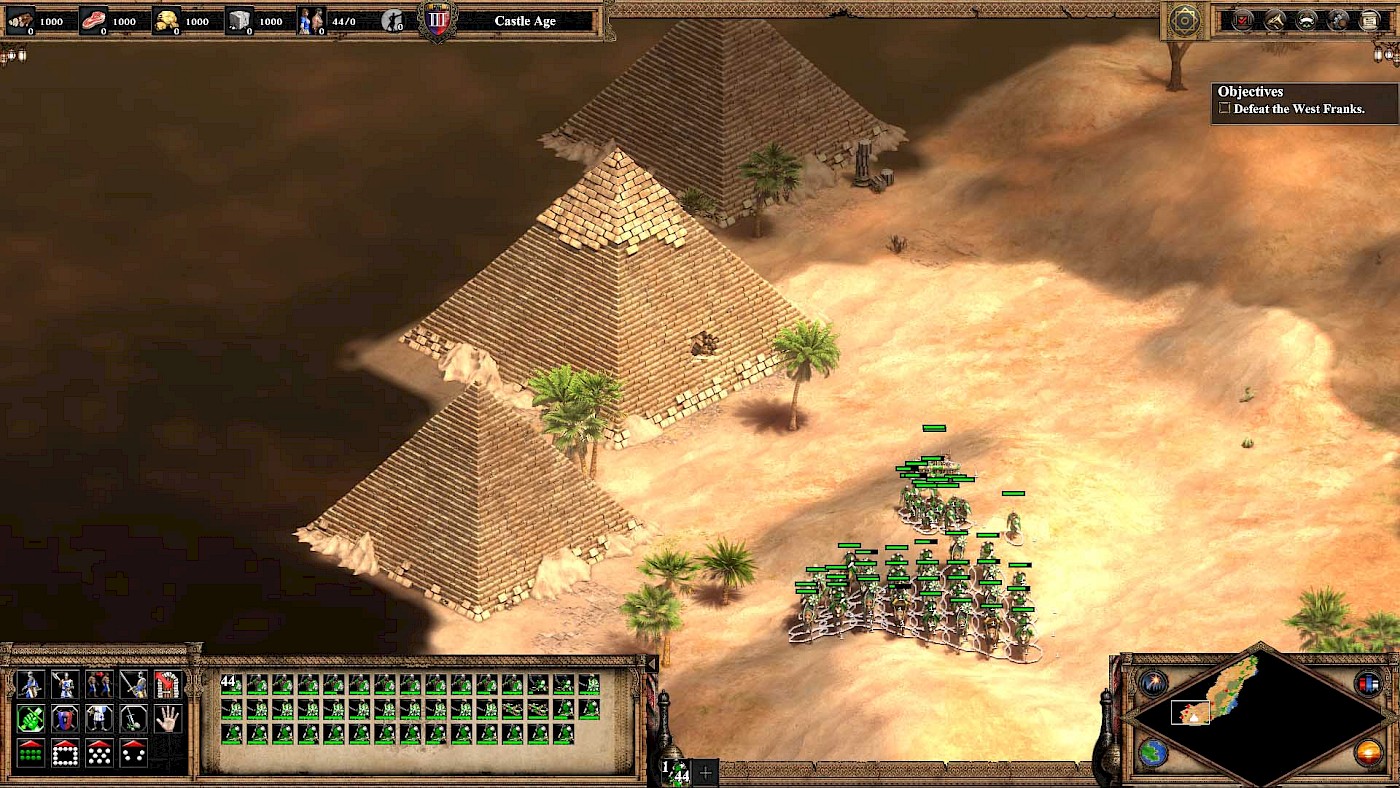It’s no secret that I had been looking forward to A Total War Saga: Troy, but the final result left me disappointed. To cleanse my palate, I returned to some old favourites in the realm of historical strategy games.
I like playing games that are inspired by history to see what decisions the developers have made in their attempt to emulate the source material. How does one go about simulating an ancient economy? What choices are made with respect to culture traits? How do developers model technological progress? Such questions are useful as we try to understand how people in the past lived and organized themselves.
Various instalments of the Age of Empires games are usually somewhere on my computer, and Age of Empires II, set during the medieval era, is probably the best of the bunch. The Age of Empires games are real-time strategy games (RTS), so not turn-based like the Civilization games.
The games in the Age of Empires series have the player take control of a historical society like the ancient Egyptians, build structures, gather resources, and amass an army to wipe out opposing players. A match typically takes half an hour to an hour, though some single player campaign scenarios can easily take two hours to complete.
Through the ages
The central conceit in Age of Empires is that you can also advance your chosen faction from one “age” to the next. Each game has four ages in total. In the original Age of Empires, these ages are the Stone Age, the Tool Age (essentially the Chalcolithic), the Bronze Age, and finally the Iron Age. Advancing from one age to the next requires you to build a few structures typical of the current age and gathering a surplus of resources: it’s very stylized, but it sort of works.
The Age system highlights that the game is very Eurocentric, with a particular emphasis on Western Europe to the detriment of the rest of the world. In Age of Empires II, for example, the first age is the Dark Age. Sure, this is sort of applicable to northwestern Europe, but in southeastern Europe the Roman Empire continued – what we refer to, rather unfortunately, as the Byzantine Empire – and there is no prolonged “Dark Age” to speak of. This becomes even more problematic when we turn to East Asia or Africa or the Americas.
Of course, there are other quibbles related to the Age of Empires games. The tech tree with different “advancements” in Age of Empires is just as linear as the tech tree in the Civilization games, with one tech leading to another. For example, leather armour leads to scale armour, which in turn allows you to unlock chain mail, provided you have also reached the right Age for each of these steps.
I long for different solutions, like the semi-randomized tech tree from the original Master of Orion (1993), or research that is dependent on map conditions (e.g. bronzeworking is “invented” only if your settlement is relatively close to copper deposits or engages in trade with societies that are already familiar with bronze). But I’m here to write about historical strategy games, not to design one.

I also dabbled with Rise of Nations, a game originally released in 2003. A new version, dubbed “Extended Edition”, was released in 2014, making the game run better on newer versions of Windows and upping the graphics a bit. Rise of Nations is a lot like Age of Empires, with a total of eight different ages (from the Ancient Age to the Information Age). It also hews even closer to Civilization in many respects. It’s a really good game, but whenever I spend some time with it I soon feel like I should be playing one of the Age of Empires games instead, especially Age of Empires II.
It’s strange, because Rise of Nations offers a lot of things that are clearly improvements. For example, villagers that don’t have anything to do, don’t stay idle for long: if there is a farm that needs to be tended, a tree to chop down, or a building to construct, they will do so immediately. Other games need to adopt this mechanic. By contrast, in an Age of Empires game, a villager with nothing to do will simply hang around until you assign them a task.
The way resources work is also arguably better in Rise of Nations. Food is needed to grow your population, and you gather it from farms. Wood is collected from forests. There is no “gold” as such: instead, you send out caravans to other cities to gather “wealth”, an abstract substance that represents whatever you might gain in trade that has considerable value, like exotic jewellery or rare spices. As you progress through different “Ages”, you’ll develop a need for other resources, such as oil. I like this system and how it reflects historical realities.
And yet, I keep thinking I’d rather play Age of Empires. Why is that?
Order versus chaos
The problem with Rise of Nations, I think, is that the game is too structured for its own good. Need food? You can’t hunt like in Age of Empires: you must build farms. And unlike in Age, Rise limits the number of farms you can build to five per city. Need wood? Place a lumberyard at the edge of a forest and then add villagers to the lumberyard. The catch? A lumberyard only supports a limited number of villagers. The same is true for mines, which are placed next to mountains.
In short, Rise of Nations puts clear limits to the number of villagers that are useful to have per city. In Age of Empires, the default strategy is to keep pumping out villagers until they account for 60% of your maximum population, and to always have them working. In Age, you can assign as many villagers as you like to chop down trees, gather stone, and so on. The work that a villager does is not dependent on a specific building. You can also build fishing boats and have these gather fish until they exhaust the rivers and seas.
A problem here is that Rise of Nations changes the way resources are harvested without changing the mechanic where you have to recruit villagers and assign them to tasks. A better, more refined version of this system is found in e.g. the relatively recent Spellforce III games, which are fantasy rather than historical. There, you construct resource gathering buildings and assign workers to them from a central pool that slowly replenishes; the workers cannot be controlled directly.
Rise of Nations also puts caps on your economy. Until you advance further on the relevant research track, resources cannot be stockpiled beyond a certain number, no matter how many farms, lumberyards or mines you build, or how many villagers you assign to them: excess resources are wasted. In Age of Empires, there’s essentially no limit to how many villagers you can assign to e.g. slaughter sheep (for food), and you can stockpile an essentially infinite amount of resources (food, wood, stone, and gold).
Likewise, Rise of Nations forces you to recruit a variety of different units because costs ramp up the more of a particular type of unit you acquire. For example, a hoplite costs 50 food and 30 metal. Each time you recruit this unit, both resources ramp up by 1, so that the second hoplite costs 51 food and 31 metal, and so on. Note that these costs are reckoned relative to your total number of these units in the game: if you were to have three hoplites and lose two of them, the next hoplite you train costs 51 food and 31 metal, not 53 food and 33 metal.
As far as I can see, there is no logical reason to have ramping costs be a part of the game except to force players to diversify the units that they use. In the real world, the second tank of a particular make and model that a country buys doesn’t cost slightly more than the first tank that they procured. If anything, one would expect that these things get cheaper the more you buy of them!
A more realistic – if that’s the term! – way of recruiting units was introduced in Age of Empires III, which is set during the Early Modern era. In that game, you can train, for example, up to five units at the same time if you buy them all at once, negating the need to construct multiple barracks, archery ranges, and other structures to field a large army quickly. It makes sense to give buildings like this the ability to train multiple units at the same time. (As an aside, a single figure in an RTS usually does represent a larger group of individual figures. This is made explicit in games where you recruit squads, such as Relic Entertainment’s Dawn of War and Company of Heroes games and, indeed, Big Huge Games’s superior fantasy follow-up to Rise of Nations, Rise of Legends.)
A similar system of batch training of troops was used a little later in the game Rise & Fall: Civilizations at War (2006), developed by Stainless Steel Studios, who earlier made the Age of Empires-like Empire Earth (2001) and Empires: Dawn of the Modern World (2003). Rick Goodman, who founded Stainless Steel Studios, had been one of the designers of the original Age of Empires. Sadly, neither Empire Earth nor Empires: Dawn of the Modern World were as good as Age of Empires.

Similarly, Rise of Nations emphasizes proper preparation of an army. You need to use combined forces. Units in enemy territory may also suffer from attrition, which means that they steadily lose health unless you accompany the army with a large and slow supply wagon, effectively slowing down the army as a whole. It may be a more accurate way to model the logistics of warfare, but it also makes it more difficult to effectively assault an enemy – which is probably the point, but still.
In short, Rise of Nations forces players to play in a particular way. In Age of Empires, you usually have a main base, whereas in Rise, you are forced to build more cities in order to increase your resource collection and to expand your borders. In fact, one of the ways you win a match in Rise of Nations is to control 70% of the map. Each city also has a sphere of influence, outside of which you cannot build any structures: Age of Empires has no such limits.
The idea behind borders was adopted by designed Brian Reynolds from the seminal 1999 turn-based strategy game Alpha Centauri, which he also designed. After Alpha Centauri, borders were also incorporated into the Civilization games, but they never really made much sense to me there. In Alpha Centauri and in Rise of Nations, borders project away from your cities at a more or less fixed distance (7 tiles in Alpha Centauri), but in Civilization, your borders expand based on how much “Culture” your cities produce. To my mind, “culture” – i.e. art and other forms of cultural expression – has nothing to do with borders, and often transcend borders. Instead, I would argue borders are defined politically and, by extension, militarily, rather than culturally.
But I digress. The point that I want to make is that, compared to Rise of Nations, the Age of Empires games are more open, leaving more space for individual creativity. They are messier, less structured games, and maybe therefore more enjoyable? The downside of this openness, of course, is that the Age of Empires games are hard to learn to play well, especially competitively. While I’ve been playing the Age of Empires series since 1997, I have never played a game online because I have a pretty shrewd idea I won’t stand a chance in multiplayer games versus human beings who have no doubt honed their skills to perfection.
In a way, the less rigid structure of Age of Empires – the lower density of rules when compared to Rise of Nations – enables players to be more flexible. In Age of Empires, for example, there is no penalty to pumping out a quick raiding force of cavalry to harass your opponent’s resource gathering operation. You can build as many farms around your Town Centre as you like.
A foray into Humankind
As I was working on this article, a development version of Humankind, was released on Google Stadia. It is a 4X game like Civilization: players take turns and they have to eXplore the world, eXpand their empire by building new cities (or conquering rival ones), eXploit the landscape for resources, and eXterminate their opponents. (The term 4X was coined by Alan Emrich when he writing about the 1993-game Master of Orion.)
Humankind seemed like it would be an interesting game, so I checked it out. Sadly, it’s not for me. It hews very close to the Civilization games – so close, in fact, that I don’t quite understand why the developer, Amplitude Studios, thinks this would offer players a significantly different experience, or why you would play this over any of the Civilization games.
Humankind solves none of the problems inherent in the Civilization series of games. Different factions – like the Nubians and the Greeks – are still essentially caricatures. The Greeks even have the amphitheatron, where philosophy supposedly flourished. But the amphitheatre is a Roman invention, and I don’t think the theatre (or arena?) is where philosophy came into its own! Those kinds of silly mistakes don’t bode well for a game that claims to be “historical”.
Amplitude Studios did interesting things with research in their earlier games, like Endless Legend. It’s disappointing, then, to see that they went with a Civilization-like linear tech tree for Humankind. Again, I think there is lots of room here for inventive developers to do something more innovative, but apparently Amplitude is not the studio to do this.

Finally, Humankind allows players to pick a particular culture. Once you’ve gathered enough “stars”, which you get for accomplishing certain things in the game, you have the option to move to the next age (there’s that concept again!). You are presented with a choice: improve upon your chosen culture, or pick an entirely different one. For example, you can start out as the Nubians and then choose to be the Greeks!
As the exclamation mark suggests, I do not understand this system. It is extremely reductive and smacks of something along the lines of guided evolution: that is, nonsense. A society doesn’t all of the sudden decide that they’d rather copy a completely different culture from one moment to the other. It is utterly befuddling how this system survived the initial design stages. It offers an even more reductive treatment of historical cultures as just collections of some traits and maybe a unique unit or two than is already the case with Civilization and, to be fair, Age of Empires and Rise of Nations.
In short, Humankind is not the next step in historical strategy gaming, at least not in its current form, as far as I am concerned. I’m all in favour of someone doing something really interesting with a historical strategy game, but this isn’t it – sadly enough.
Closing thoughts
As I said at the beginning of this article, I do enjoy playing games that are inspired by history to see what choices the developers made, and how they represent the chosen topics. Often, it can end up a bit disappointing, like the mess that is A Total War Saga: Troy. Sometimes, the results are something we can work with (and against), as with e.g. Assassin’s Creed: Odyssey or the Civilization games.
And then there are games that are great games that also have something of interest to offer to professionals who are engaged with the past. I’d put the Age of Empires series in this particular column, as well as Rise of Nations, even if the latter is not, I think, superior to the former, for reasons that I have outlined above. Age of Empires II is probably the best of the bunch, with refined gameplay and single-player campaigns that are interesting.
The Joan of Arc campaign, for example, is an interesting mix of actual historical events and some fantastical elements (many of which are still based on historical sources). Like most Age of Empires II campaigns, the Joan of Arc campaign is framed as being told from someone else’s perspective, and I think this is an effective way to tell a story in a historical game. Much better, in any event, than the muddled fiction from Age of Empires III or the drier treatment of the subject matter in the original Age of Empires. (There’s a good article about the Joan of Arc campaign on Gamasutra.)
There is still plenty of room for inventive developers to innovate with regards to historical games. One downside is that most of these games focus very much on warfare: I would love to see a strategy game that emphasizes other aspects without necessarily being a pure city building game such as the venerable Caesar series of games, Zeus: Master of Olympus (2000), or Children of the Nile (2004).
Games, like all popular media, play an important part in introducing general audiences to history, whether it’s the ancient world or more recent periods. It’s important, therefore, that games offer useful perspectives on history, and for experts to share their thoughts on what games get right and what they get wrong.
